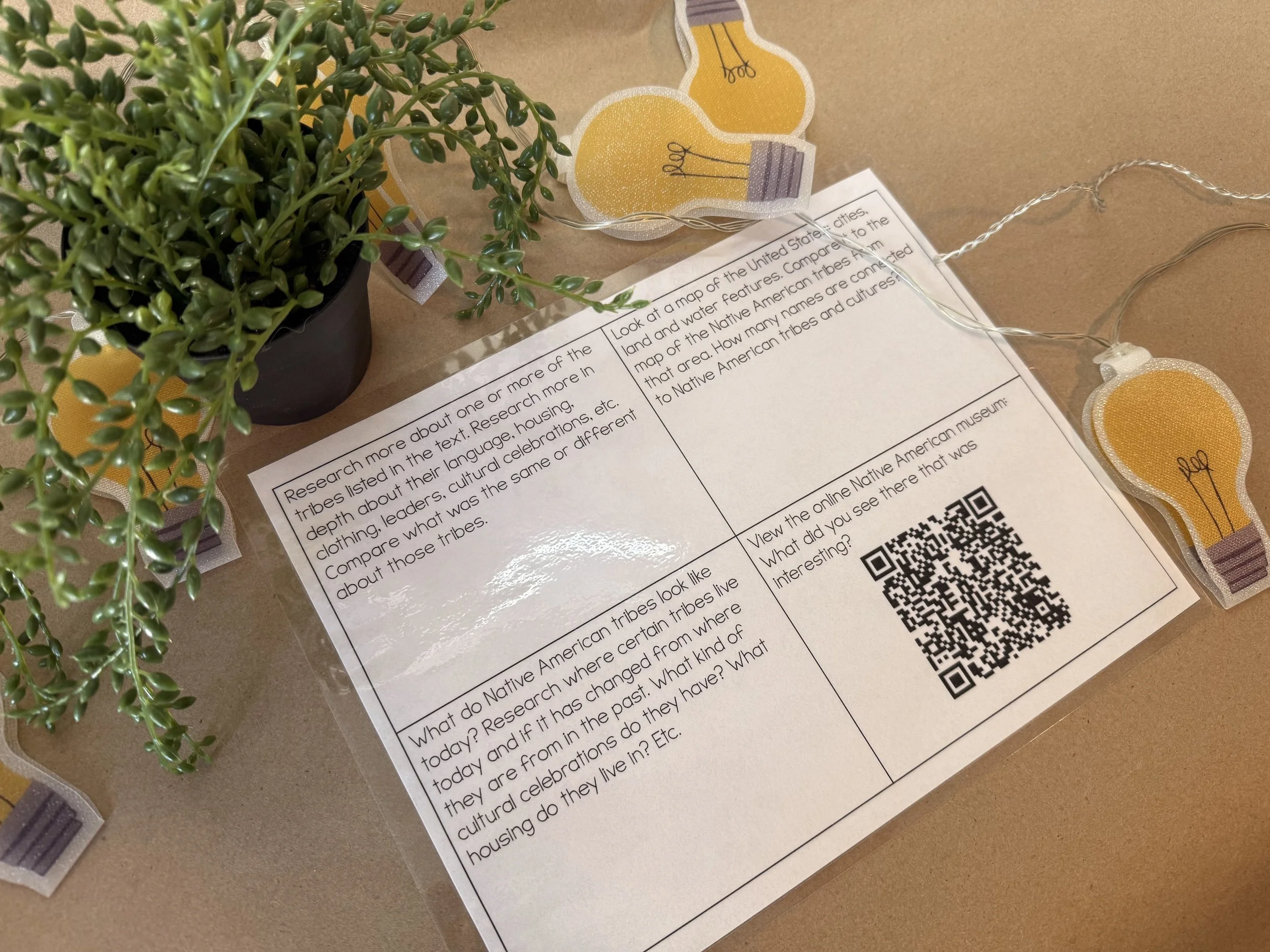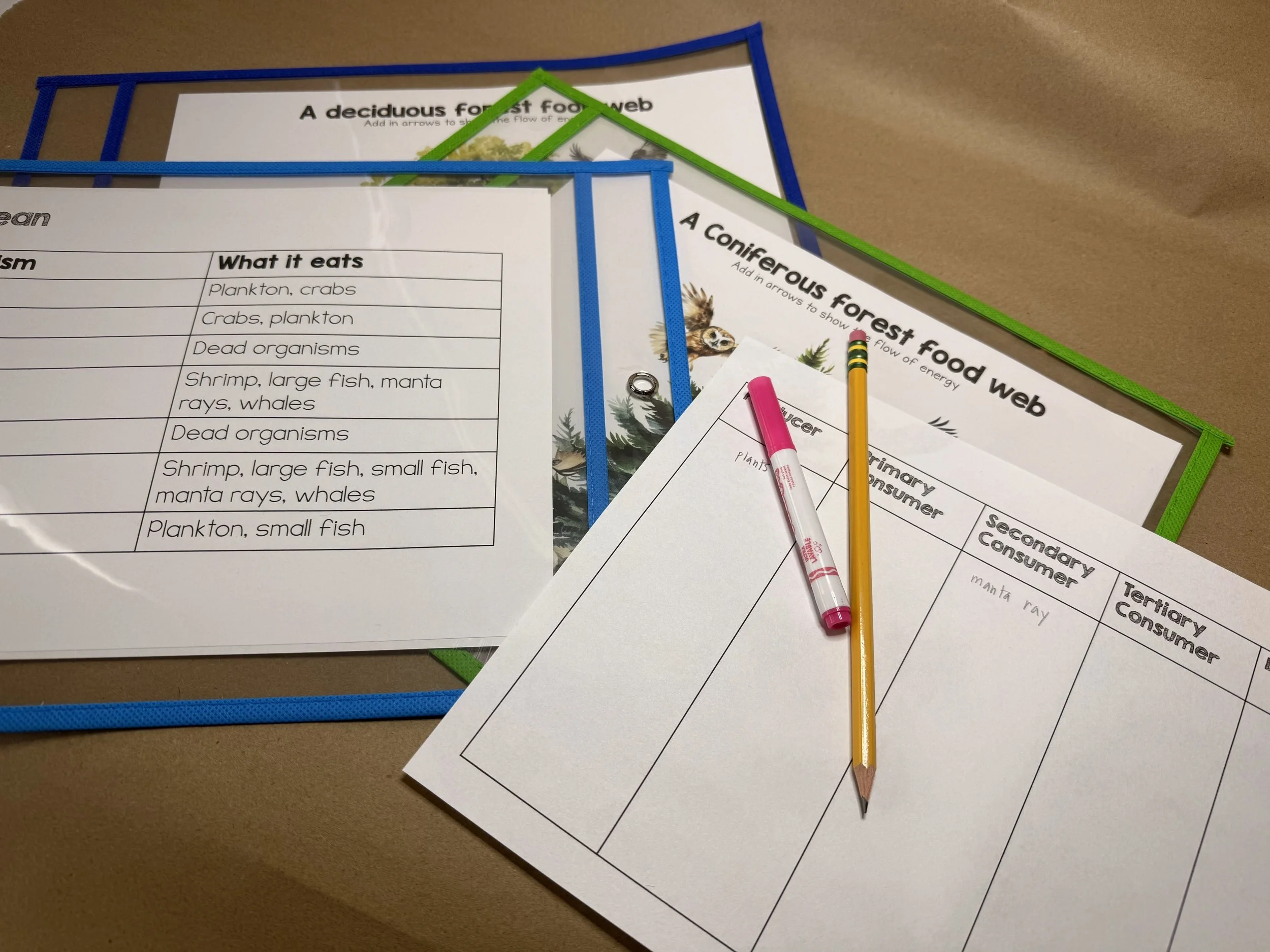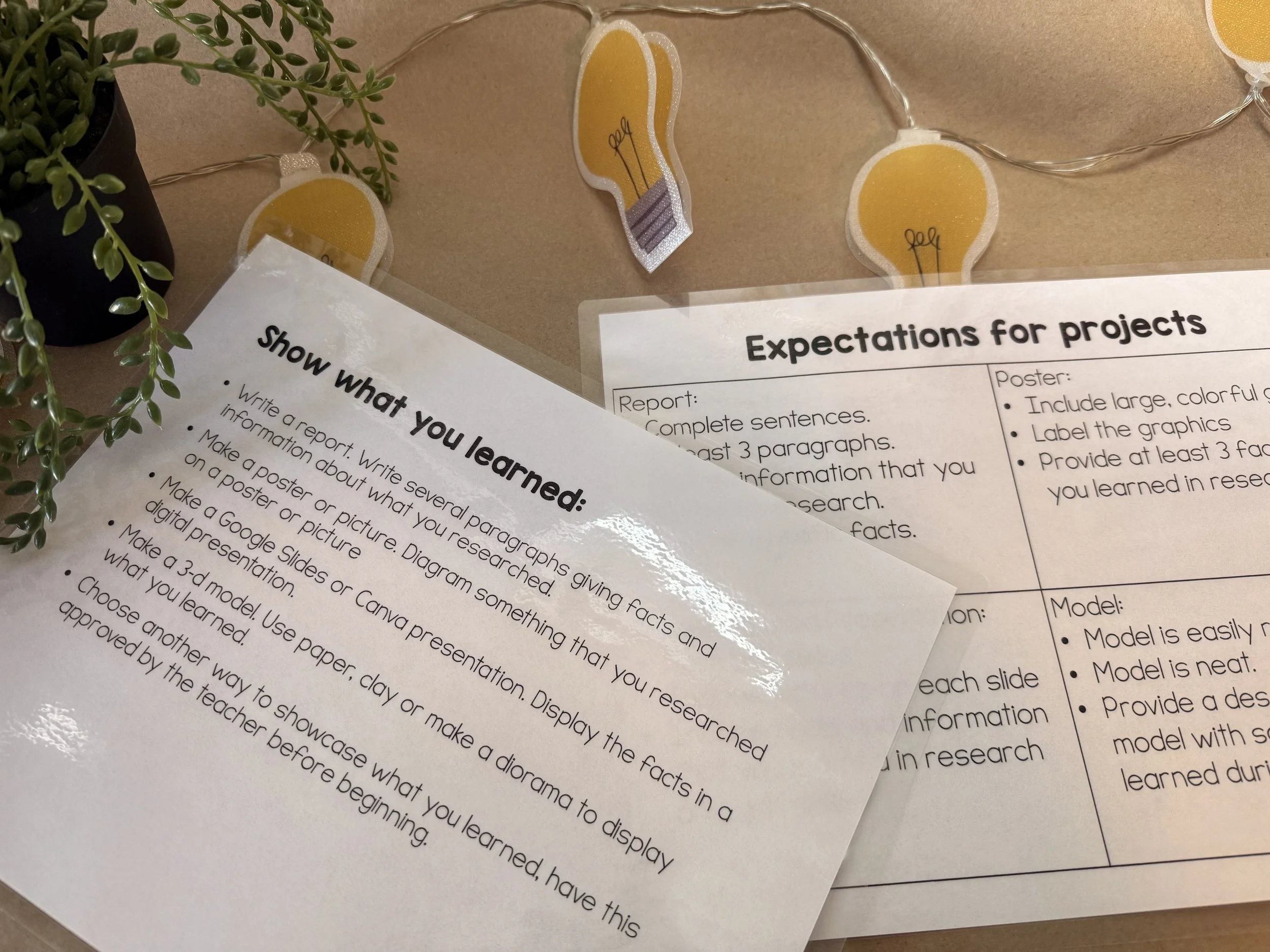Structured Project Based learning
Project based learning is a big buzzword around education. I first started trying to do project based lessons about 8 years ago. It was a disaster! I gave the students a guiding question and a couple parameters but that was it. The students were either confused or they were messing around during PBL time. In addition, I was overwhelmed with students needing help and the chaos in the classroom. After that first experience, I honed in and changed how I did PBL and I came up with a system that can work with any lesson. This system is: Teach, Research, Create.
Teach
The first step of the process is teach. This is what we are good at! This is the traditional way that education has been done for years. Students sit at their desks, teachers teach. But this isn’t just a lecture; bring in videos, interactive notebook pages, informational reading stations, etc. We’ve got this. Pro tip * limit this teaching time to 15-20 minutes for your middle grades (5th-8th) more time than that and you start to lose their interest/ attention
Research
The research portion is set up similar to stations. Set up enough stations so that there is only a group of 2-3 students doing each one. So 24 students needs about 8-10 stations. Before beginning research stations I make sure that students understand what research is. This is typically a beginning of the year series of lessons covering topics like: making observations and inferences, how to take notes, finding important information from a website, asking questions about what you are reading, etc. Students bring their notebooks to a research station and will conduct research. The station may be a website that they explore. It may be a book with pictures on the topic. It could be a sort or activity. Below are some examples of research stations that I have used:
Research choice board
Choices of things to research based on the topic of Native Americans. I would count this one paper as four different stations for the students to choose from.
Food webs sort
Sorting organisms from a food web into columns- producer, consumer and decoposer.
Students will get to work on research daily for 15-20 minutes. During this time, they choose one station and stay there the entire time. They do get to choose but they don’t get to bounce around. They should be writing down notes on what they are finding. They also need to write down questions they have as they are working. After researching multiple topics over the course of several day, they will deep dive into one of the topics that they had the most questions about. They will search for the answers to their questions on the internet or in a book from your school library (bring in the librarian to help them find what they need!).
In all the research portion of the project should last about 2 weeks. A daily routine during this research stage would be to teach a topic for 15-20 minutes then research for 15-20 minutes. Keep in mind: the research stations are focused on different topics. For example I can have my food web stations, ecosystem stations and Native American stations all out at once. I try to teach these topics over the course of the two weeks that I have the stations out.
Create
Here comes the fun part! Before you can begin this portion of the project, I will typically have students place their Science notebooks out on their desk open to the research that they did. This should be the research from their deep dive. I will put a star on their notebook showing approval. Only students with stars get to create. All other students will need to redo the research step and will not get to create this time. This may seem harsh but the purpose of this portion of the project is to show what they learned. If they don’t have any notes with new information learned, then they can’t show what they learned. It also serves as motivation to focus on getting research done, not just daydreaming! For those students who are creating, I give the following choice board:
This is the Project part of the project based learning. This works out well because they are doing a project within parameters which eliminates the chaos that happened that first time I set out to do PBL. I let them choose one of four things on the Create choice board: a report or a little book about what they learned, a poster or picture, an online presentation on slides or Canva, a 3-d model (get some air dry clay for this!). If they have another idea in mind of what they want to do, they can ask me and we can discuss what they have in mind.
This project will take 1-2 weeks to create depending on how invested your students are. During this 1-2 weeks I use the whole 40 minute Science period to work on this project. Note: for those students who did not finish the research portion of the project, I let them do 2 research stations a day. If they work hard and get some good research done quickly, then they can do a project. However, I will choose the project for them. It will be something I know they can complete quickly.
Final Presentation
Once students have completed projects then I will typically take a week to do presentations for 10-15 minutes during my Science class period. These presentations are completely optional. I have found that students like to present what they learned/created. They feel like the expert and they have taken pride in their work.
Teach, Research, Create Units
Create your own units by thinking of topics that you want to teach over the course of 2 weeks. I usually focus on Science topics but I have also done Social Studies and math topics as well. You can create your own stations for your research portion or look to my store to find some already made ideas.
Good luck and happy learning!


